How to Build a Food Delivery App like UberEats
Food delivery is something most of us can’t leave without. The pandemic and safety regulations made applications like UberEats even more popular. Now, to taste their favorite meal, restaurant guests place an order and wait for a courier to deliver it.
Moreover, food orders are the only way for restaurants to earn money, while dine-ins are prohibited in numerous countries, including the U.S.
Even though Uber Eats popularity, many restaurant owners criticize the platform for unfair service commissions that reduce restaurants’ already small profit margin.
For that reason, savoy restaurant owners are considering developing their food delivery marketplaces like UberEats. As the saying goes, if you can’t beat them, lead them.
Suppose you are one of the brave and optimistic food tech entrepreneurs and considering developing an app like Grubhub or UberEats. In this case, you need to know UberEat’s business model and simple steps to build such an app or even better. Let’s see how food delivery marketplaces similar to UberEats operate and how much it will cost you to make a food delivery aggregator.
Emerging Trends to Strengthen Food Delivery Apps
The food delivery sector has one of the most intense competitions. To stay afloat and fight rivalry, companies need to keep up and adapt to emerging trends that allow them to enhance user experience, boost productivity, and meet customers’ current needs and expectations, thereby increasing retention and revenue.
Here are the most popular trends to know and introduce.
Hyper-personalization. Hyper-personalization has been the talk of the town for over five years already. It does not lose momentum, as more customers expect brands to provide them with a relevant environment where they can make accurate decisions. The main trend lies in introducing AI-driven suggestions based on customers’ relevant needs, purchase history, and preferences.
Sustainable delivery options. Being eco-friendly is another huge topic that is regularly discussed across niches. People expect vendors and manufacturers to provide them with a safe environment driven by eco-friendly practices. For instance, bike couriers and carbon-neutral delivery are very popular these days.
Expanded delivery categories. The market strongly relies on delivery these days, exploiting its potential and pushing its limits. As a part of adaptation, many companies have already delivered not only food but also groceries, alcohol, and pharmacy.
UberEats Business Model
The UberEats app is both a restaurant aggregator and a delivery agent that performs two different ways:
- UberEats uses a traditional food delivery model, listing partners-restaurants in a single app.
- UberEats also handles order delivery using its own logistics network to deliver orders from restaurants that don’t have a delivery option.
The most notable features of this food delivery application include:
- Recommendations
- Advanced search
- Order tracking
- Delivery details
Now, let us take a look at UberEats monetization strategies.
How does UberEats make money?
The company applies three monetization strategies:
- Delivery Fee from $2 to $8 per order depending on the distance between customers and restaurants
- Service Fees from 15% to 40% fee for each order received via UberEats.
- Promotion -when partner restaurants pay for ranking first in the search, which increases their visibility to customers.
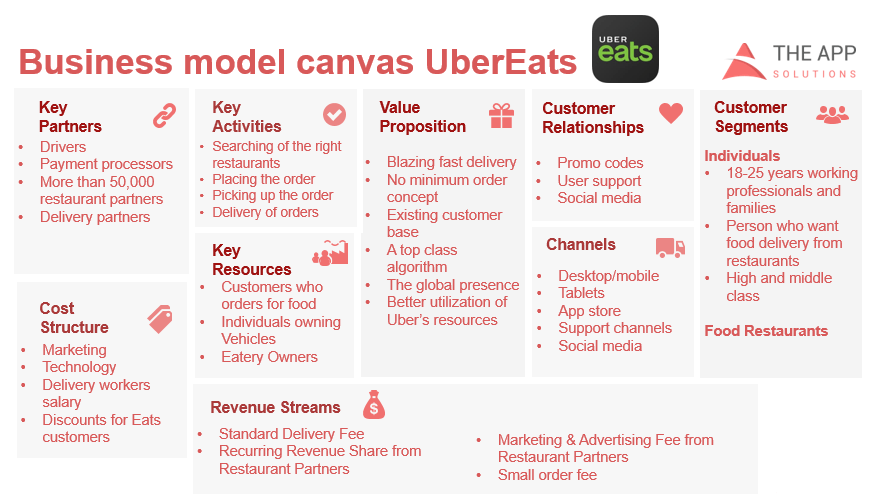
How to make a food delivery application: 5 steps to follow
To develop apps like UberEats and make it popular among users, you need something more than copying its features. To help you surpass UberEats, we suggest applying the following steps:
Step 1. Track Food Delivery Industry Trends
You need to be aware of the new delivery channels and other trends:
To make your project unique in the selected niche, consider integrating ordering via social media accounts functionality.
The first company that used this ordering option was Domino’s Pizza, which offered customers orders via Twitter accounts. App users “tweeted” a pizza emoji to the Domino’s Pizza Twitter account to place an order.
A GUIDE ON STARTING A FOOD MEAL KIT DELIVERY SERVICE

[Source: Domino’s Pizza]
Before ordering at Domino’s Pizza vis Twitter, users need:
- Create a “pizza profile” and list a favorite pizza
- Fill in the “default orders” section on Domino’s Pizza website
- Link a pizza profile with a Twitter account
Chabot allows placing orders via messengers and requests food by a single word:
Domino’s pizza has developed Dom, a chatbot that allows placing orders on Twitter and Facebook messengers and learn about special offers.
Grubhub has integrated its system with Alexa, Amazon’s virtual assistant, allowing customers to reorder any of their last three purchases.
Just Eat has decided to keep up with the current trends and integrate Alexa into its ordering system. Thanks to new Amazon hardware, Echo Show, Just Eat can place orders by voice and check the courier’s location.
Food delivery companies widely use wearable devices:
Domino’s was a pioneer who launched a food ordering app for Android watches which simplifies ordering.
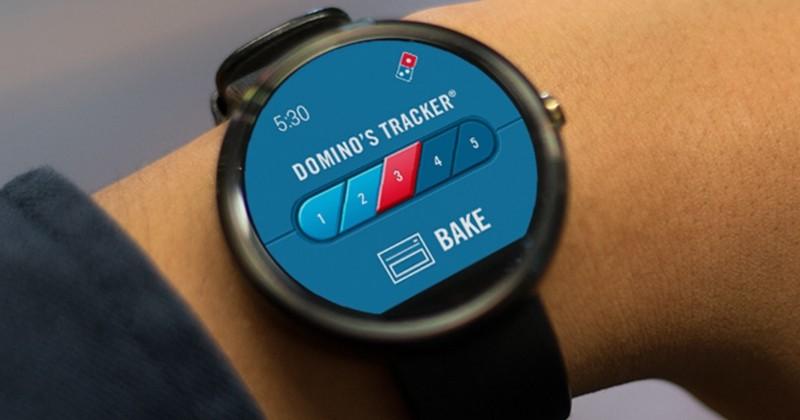
[Image source: Domino’s Pizza]
OrderUp introduced its latest app for the Apple Watch. OrderUp customers can place orders, track delivery statuses, and see when the courier will arrive.
BALANCING THE SUPPLY AND DEMAND WITH AN ON-DEMAND GROCERY DELIVERY APP
Step 2. Choose Food Delivery Model
Now, you need to select a food delivery model among two business models that will suit you the best:
|
| Order-Only Model
| Order and Delivery Model
|
| Companies |
|
|
| Description | Companies only manage orders. | Food startups are responsible for both managing orders and delivery. In some cases, such businesses cooperate with courier services. |
| Monetization | Order-only businesses charge restaurants 10 – 30% of order value. | The business model includes a commission from restaurants (25-30%) and the delivery fee. You can set a flat-rate delivery fee or charge a fee based on customer and restaurant distance, as UberEats does. |
| Limitations
| This business model has a low barrier for entry. Thus, this niche is quite crowded with competitors. | You need to hire and train carriers, etc. The increased amount of management works may impact business scaling. |
| Benefits
| By using this business model, you don’t have to worry about cooking and delivery. | Once such a food delivery is in place, you will develop a company and receive a profit. |
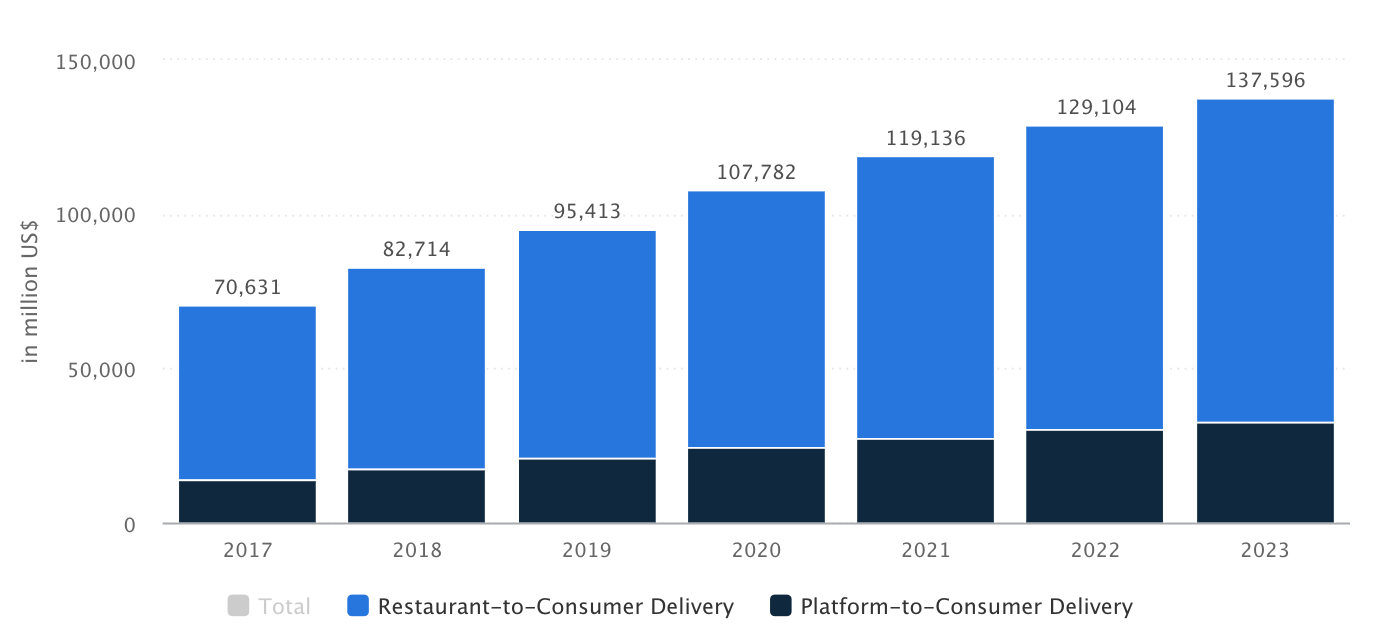
[Statistics for on-delivery services income by Statista]
Step 3. Research target market
To develop an excellent food delivery app, you need to know the target audience. Once you understand who will use the food delivery app, it is easy to build an app that ideally meets target audiences’ needs.
The target audience could be narrow, such as gluten-free raw vegans, or broad, like pizza lovers.
To draw a clear picture of the target audience, use demographic criteria and create a target customer profile by clarifying the following info:
- Social characteristics, including income, gender, nationality, and age
- What potential customer problem may your project solve?
- What feeling will your application provoke from customers?
- Why should customers use the platform rather than competitors?
By clarifying all of these points, you will have a good idea of the target customers.
HOW MUCH DOES IT COST TO DEVELOP AN APP: DETAILED FEATURE BREAKDOWN
Step 4. Choose the main features of UberEats-like food delivery services
When developing a mobile app like Uber for food delivery, consider the following features:
Login allows login to the app using email or social networks profile.
Search allows searching by meal, filters, as well as food category. This section should include pictures of dishes, the process, and a description of the meal.
Order placing allows adding meals to the cart.
Order checkout includes all selected dishes and the order total.
Payment allows users to pay for the order via the built-in payment gateway. Our advice is to integrate several payment systems, such as PayPal, Stripe, MangoPay. We applied this strategy to custom marketplace development. You can find the complete case study on the link.
Notifications inform users about the order status via push notifications and SMS.
Order tracking shows real-time order tracking using the CoreLocation framework for iOS apps and Google Location API for Android apps. Besides, Mapkits and Google Maps will help couriers to find the best route to the customer’s location.
User Reviews allows app users to share their experience and rate restaurants.
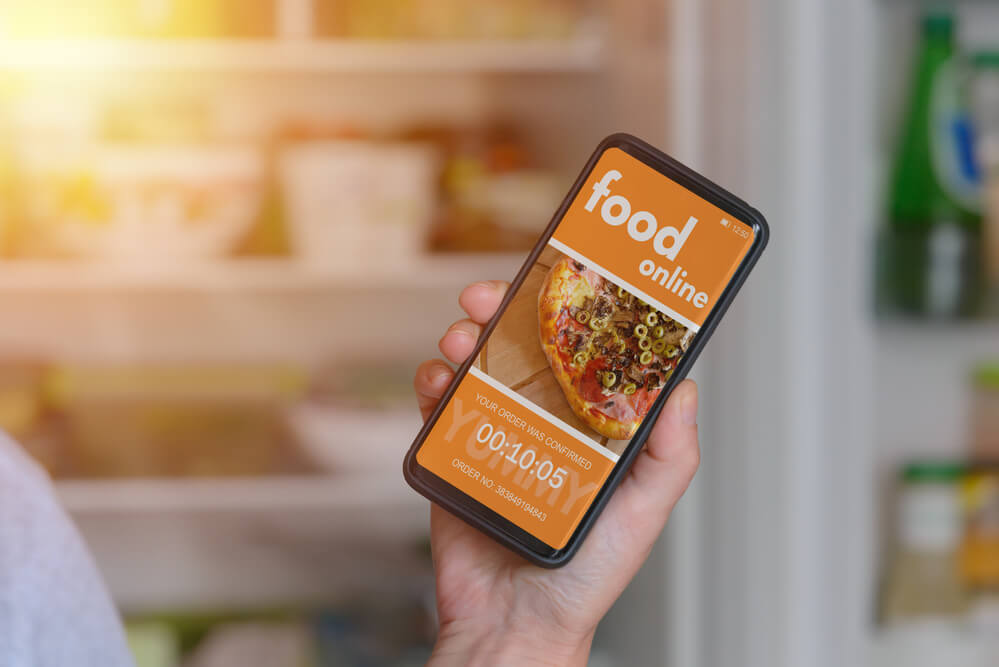
Step 5. Select the Technology Stack of Food Delivery App Development
Depending on the business model of a food delivery startup, you might need different technologies. Still, we have gathered an essential tech stack for Uber-like apps in the table below:
Restaurant listing
- Grubhub API
- FourSquare API
Payment gateway
- Square API
- Braintree
- Stripe
- PayPal
Find user location
- Core Location Framework
- Google Places API
- Google Maps
Push notifications
- Amazon SNS
- Urban Airship
- Firebase Cloud Messaging
HOW TO CREATE A LOCATION-BASED APP FOR ANDROID AND IOS
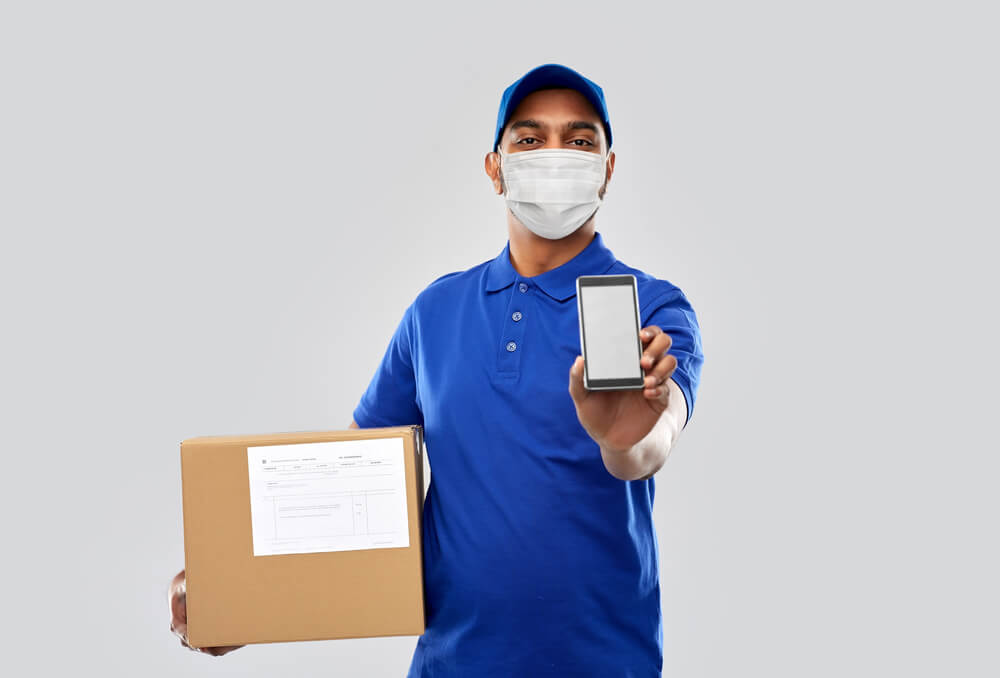
How Much Does It Cost to Develop a Food Delivery App?
The mobile app’s cost consists of many elements, including the number of platforms, feature list, the number of integrations, etc.
The mobile development team will create a detailed app estimation only after the discovery (inception) phase.
What does this mean?
The discovery (inception) phase is the first step you and the development team take to build a solid foundation for app development. This stage includes several components, such as:
- Functional specification
- UX/UI design
- Visual prototypes
The product discovery phase can help you with:
- Defining the scope of work
- Developing the project roadmap
- Setting a realistic MVP budget
- Planning resources
- Testing the app MVP with a target audience
- Developing a solid investment pitch
So, how much will the food delivery app cost?
We need 50+ hours to create UI/UX design, 66+ hours to build the app’s back-end, while the development stage may take 120+ hours per platform.
To make your app like UberEats stand out, keep an eye on current food ordering industry trends, and don’t forget to give your customers added value that your competitors don’t have.
For a food delivery app, you can apply either an Order-Only or Order and Delivery Model. With the app MVP, you can gather insights from the target audience and add other features during the second development stage.
Our Successful Story
CASE STUDY: Alfredo Ibiza On-demand Food Delivery App
Alfred Ibiza is an on-demand delivery mobile app that connects restaurants, stores, couriers, and customers in Ibiza. The app allows customers to order from restaurants, pharmacies, and supermarkets, listed on the platform. The APP Solutions got to work!
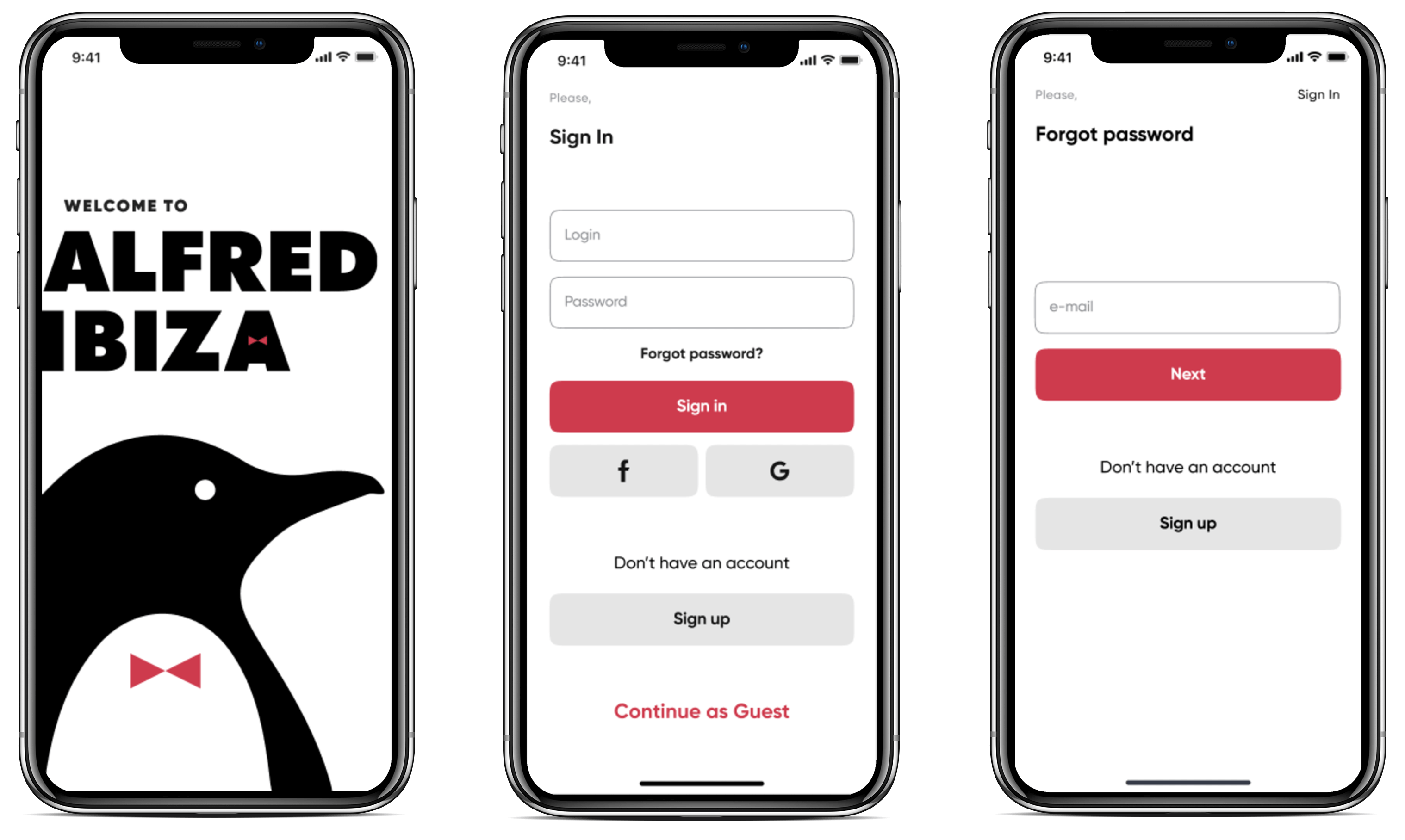
We managed to develop the Alfred Ibiza platform within just three months, at a total project cost of $70,000, 50-60% cheaper than the average development cost of a food delivery app.
The platform includes an app for customers, couriers, an admin panel for restaurants with only necessary functions. Besides this, we also developed a marketing landing page to promote the Alfred Ibiza platform.
Our tech stack
- Node.js
- React.js
- React Native
- Stripe
Team composition
- 1 Back-end Node.js developer
- 1 React.js developer
- 2 React Native developers
- 1 Quality Assurance manager
- 1 product owner
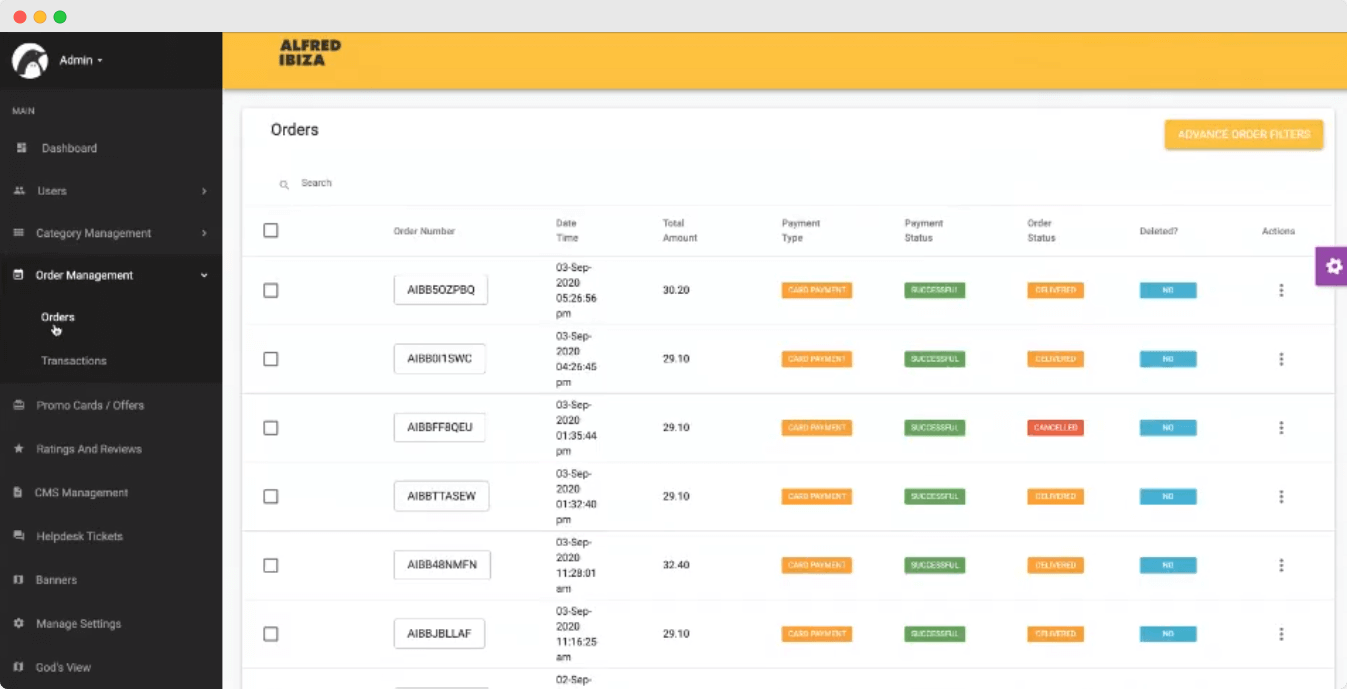
What our clients say
Related articles:
How to develop Uber for trucking
